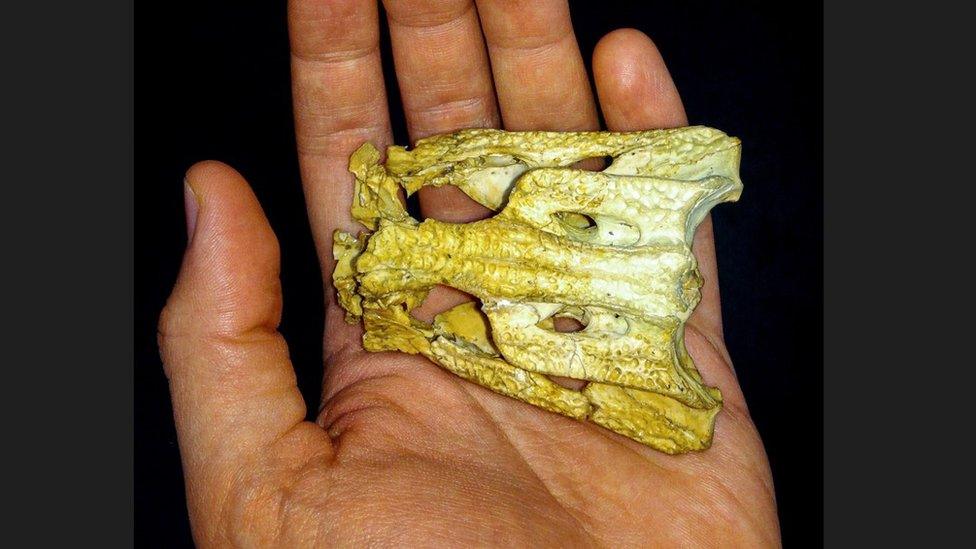Crocodile: Scientists find out more about tiny Australian crocodile
- Published
- comments

The skull of the tiny crocodile was well preserved
Scientists have discovered new details about a tiny crocodile that lived around 13.5 million years ago.
Researchers used special technology to examine the skull of the now extinct croc, who would have lived in Queensland, Australia.
They discovered that the Trilophosuchus rackhami would have been very small, at just 90cm long, weighing up to just 2kg.
The study
Jorgo Ristevski, one of the co-authors of the study, examined the skull of the crocodile
The team from the University of Queensland, examined the skull of the crocodile.
"By micro-CT scanning the beautifully preserved skull, we were able to digitally separate each bone," said Jorgo Ristevski co-author of the study.
A CT scan uses X-rays and a computer to make detailed images of inside the body.
These scans could then tell the team lots of information about the tiny species of crocodile.
Ristevski said, it would have been "between 70 and 90 centimetres long", that's about three 30cm rulers. They also discovered it would have weighed one to two kilograms, which is roughly the same as 12 apples.
This was a truly unique looking croc, with a short snout and three distinct ridges on the top of its skull.
Paleoneurology is the study of the brain and nervous system in fossil species. Ristevski said it can provide important insights into the animals evolution and behaviour.
For one of the studies Ristevski digitally recreated the space inside the brain and found that it was similar to some distantly related, land-based extinct crocodiles from Africa and South America.
"We were quite surprised to find this because evolutionarily speaking, Trilophosuchus rackhami is more closely related to today's crocs", said Ristevski.
"This may indicate that Trilophosuchus rackhami spent more time on land than most living crocs," he added.
Steve Salisbury, co-author of the study, said Australia had a great diversity of prehistory crocs until very recently.
"Trilophosuchus rackhami was certainly one of the cutest," he said.
Salisbury added: "If we could travel back in time to north Queensland 13 million years ago, not only would you need to watch out for crocodiles at the water's edge, but you'd also have to make sure you didn't step on them in the forest."
- Published15 February 2022
- Published27 April 2022
- Published4 October 2021
